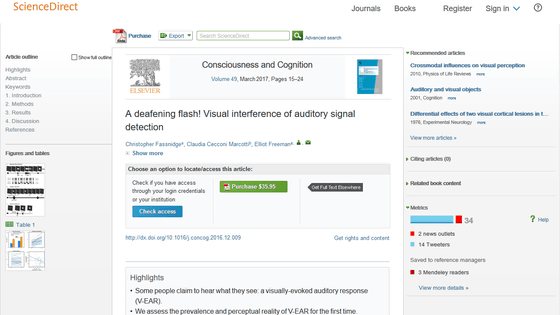One in five people can "hear" the light
Although stimulation of light is received visually, it turned out that some people said that while receiving stimulation of light there is a person who can hear sound. According to research, the number is 22%, about one in five people seems to be.
A deafening flash! Visual interference of auditory signal detection
http://www.sciencedirect.com/science/article/pii/S1053810016303336

Listen with your eyes: one in five may be 'hear' flashes of light | Science | The Guardian
https://www.theguardian.com/science/2017/jan/17/listen-with-your-eyes-one-in-five-of-us-may-hear-flashes-of-light-synaesthesia
The Guardian has released demo video of what this is actually like. It is hard to understand because the explanation is not made, but it is difficult for the user to understand that the short Morse code flows twice in either "light only" or "sound only", then whether the two were the same as "Different" "Same" It shows.
Saenz Koch Demo - YouTube
According to researchers at the University of London and King's College London, 40 people participated in the test. When the Morse code of light was flowing in the demonstration video, 22% said they heard the faint sounds at the same time. Researchers describe this as V - EAR (Visually - Evoked Auditory Response: visual stimulation by visual stimulation).
It is thought that V-EAR enhances the ability of hearing by internally reproducing the visual stimulus as a sound, but when I heard Morse sig- nal sound combined with meaningless light in the meantime , The sound felt by light was disturbed by the noise as it became noise, and the person of V-EAR lowered the discrimination rate, and "auditory" and the V-EAR became independent It seems to be existence.
Eliot Freeman of the University of London who is the lead author of the paper and pointed out that the detection and identification of actual sound may be hindered by the fact that V-EAR is demonstrated under subconsciousness.
Aside from this, I did a similar test to the music group and it seems that there were more people of V-EAR. However, it is still unknown whether the V-EAR is congenital or whether it was acquired afterwards for many thousands of hours of practice.
Related Posts:








